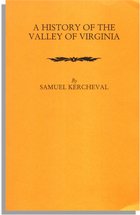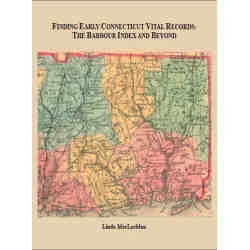
City directories may be one of the most underused genealogical sources available. Old city directories exist for virtually every community in America, often going back to the establishment of a community. Many of the privately published city directories date back over a hundred years, and some of these collections are complete for every year in which a directory was published. Surprisingly, those that exist are quite easy to find. They are usually located in the public library serving a particular city.
For example, when I first started in genealogy, I was living in Seattle, Washington, where I soon discovered the wonderful collection of city directories at the main branch of the Seattle Public Library. Their collection of city directories, with some gaps in the early years, dates back to 1877. (The city was founded in 1853.) From about 1885 onward, the collection is complete for every year, with an annual city directory for Seattle and its environs. (In some years, competing publishers produced more than one directory.) I should add that the library’s collection of Seattle telephone directories for over 60 years complements its city directory holdings.
City directories typically list the name of each resident, an address, and a surprising amount of information, including occupation. City directories provide an unmatched source for finding the exact place a person lived, and they often function as a surrogate source of information about residents for a particular time period. City directories can act as a substitute to the lost 1890 census, for example.
Virtually every city in America with a public library has a collection of city directories for that city. New York City’s directories go back to the 1730s, and they are nearly complete through 1933, the last year a city directory was produced for Manhattan. The New York Public Library has an outstanding collection of the old city directories. Boston’s city directories go back even further than New York’s, and the Boston Public Library’s collection is a real treasure.
There have been many different directory publishers; however, by far the largest is the R. L. Polk Company. Today, this company has offices in the largest cities of America, where you may visit their library of current city directories. Check the yellow pages to find the R. L. Polk office nearest you, and you will discover a resource for current directories. (Current city directories give more detail about a person than the online residential directories). Older city directories, however, are almost exclusively found in public libraries, college libraries, and archives nearest to the city in question.
The Cross-Street Index
A feature in most 20th-century city directories is a cross-street index, found at the back of the volume. This index is arranged according to the address of the houses, apartments, or businesses in the city, followed by the house number and names of residents at each address. Using this feature, a researcher can learn the names of people living next door to a relative. Next-door neighbors of a decade earlier, for example, may still live there and remember your relatives. Their presence may help you to locate lost relatives.
The cross-street index is also a resource for people whose names may have changed. For example, a woman living alone at a particular address in 1938 does not appear in the 1939 directory. But, by going to the 1939 cross-street address listing for the same address, you might discover that the woman had married and was still living in the same house, as well as learn the identity of her new husband!
Old City Directories on Microfilm
City directories for the 50 largest cities in America dating before 1860 have been collected together and microfilmed. The collection was produced by Research Publications, Inc. (12 Lunar Dr., New Haven, CT 06525), and it is available for sale to the public. The Family History Library in Salt Lake City has this complete collection, and you can find a particular directory by searching for that city in the Family History Library’s catalogue. Just access the FHL’s website at www.familysearch.org and use the keyword “city directories [name of city]” to search for a particular book.
Genealogy in City Directories
Since the information in city directories is far more revealing than just a name and address, a typical city directory can be a genealogical gold mine. Here is a transcription taken from a city directory for the town of Whatcom (now Bellingham), Washington, for the year 1893:
Clancy, Annie (wid Patrick), res bet R R tracks nr B B & E round house
Clancy, John, lab B B I Co mill
Clancy, Mary, clk Montague & Mchugh, bds Mrs Annie Clancy
Clancy, Michael, lab B B I Co mill
Clancy, Wm., lab B B I Co mill
The five entries above read like a family group sheet! First, the directory informs us that Annie Clancy is a widow, and her deceased husband’s name was Patrick Clancy. The Mary Clancy boarding with Annie Clancy appears to be a daughter, and the three men who all work at the same place likely are Annie’s sons.
The following example from a 1955 city directory for Waterbury, Connecticut, displays some interesting entries for the name Culotta:
Culotta Augustine r 29 Crescent
Charles G slsman r 29 Crescent
John died June 6 1954 age 65
Joseph P slsman r 29 Crescent
Mariano h 42 Cooke
Mary M wid John h 29 Crescent
Rose M slswoman Hartford r 29 Crescent
Thomas C student r 29 Crescent
The foregoing entries tell us quite a bit about this family. First, note that it gives an age and exact date of death for John Culotta and that his widow was Mary M. Culotta, who owned a house at 29 Crescent Street in Waterbury. (By the way, “r” indicates a renter, and “h” indicates a home owner.) Also living at that address were Augustine; Charles and Joseph P. Culotta, both salesmen; Rose Culotta, a saleswoman working in Hartford; and Thomas, a student–all of whom could be the children of John and Mary Culotta. Since all of the Culottas in Waterbury, Connecticut, in 1955 lived in the same house except for Mariano Culotta–who owned a house at 42 Cooke Street–one can infer that Mariano was probably related to the others.
The above examples illustrate that family relationships can be gleaned from city directories, and sometimes a surprising amount of detail is revealed. The examples are not unique. They are typical of virtually every city directory that has been published for cities and towns across the country. Unlike its offspring, the phone book, a city directory has a great deal more to say about the inhabitants of a city or town.
Finding City Directories
To learn what city directories exist for the locality and time period of your investigation, address a letter to the “Reference Librarian” at the public library for your city of interest. Include a self-addressed stamped envelope (SASE). You can get the address of that library from the “American Library Directory,” published by the R. R. Bowker Co., available at your local library. Every library in America has this directory, which lists the addresses and phone numbers for all American libraries, whether public, private, special collection, college, or archives. You will also find descriptions of the holdings of a selective list of public libraries with genealogy collections is my book, Getting Started in Genealogy Online. For more information on this book, please CLICK HERE.
Although many libraries will not conduct any research for you, they will almost certainly answer your query. Then, contact a local genealogical society and see if a volunteer is available to go to the library and do some looking for you. Most genealogical societies render this service, for which a small donation to the society is customary.
N.B. To see a list of Genealogical.com books based in large part upon city directories, or citing city directories as potential sources, CLICK HERE.





